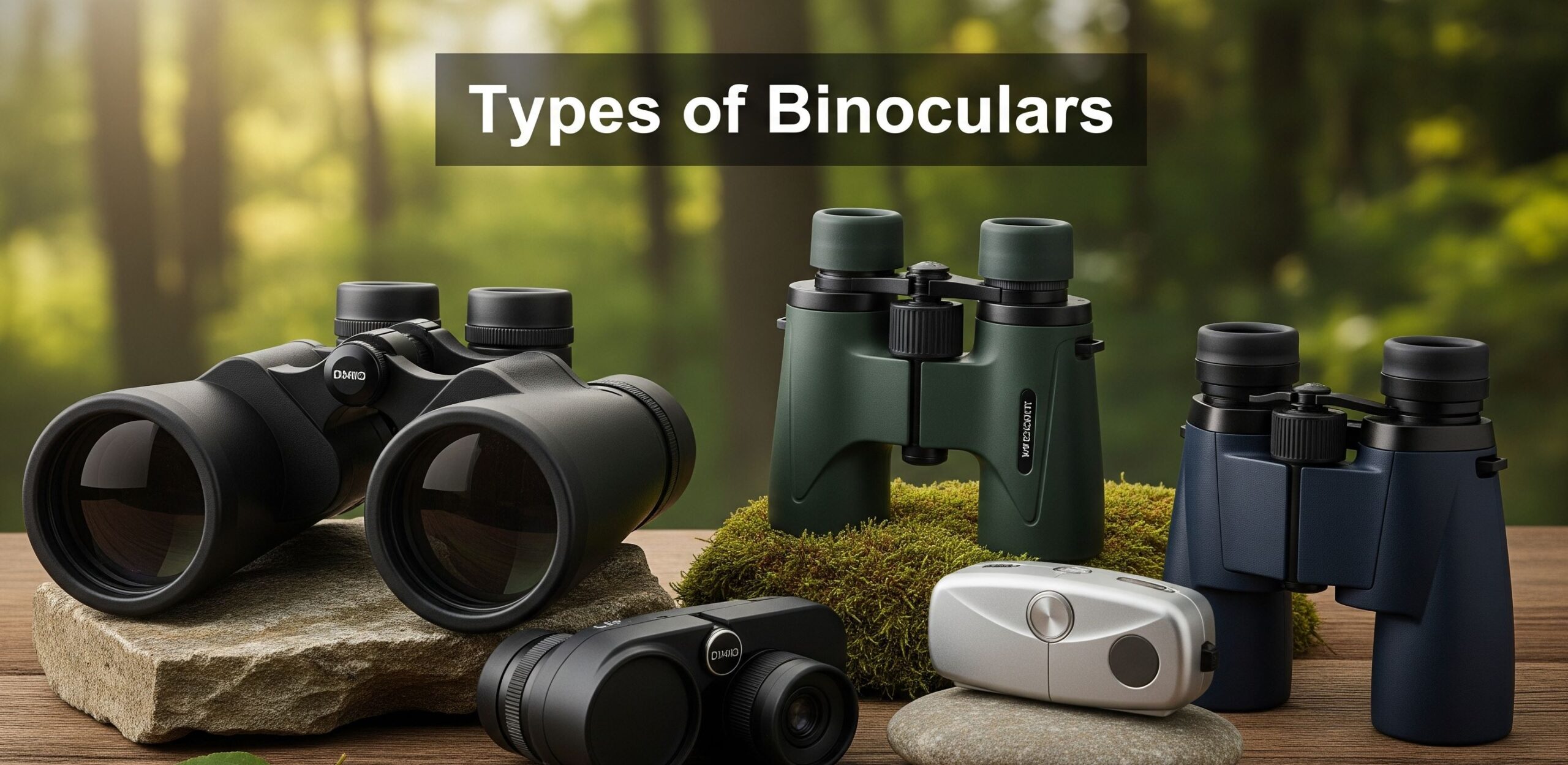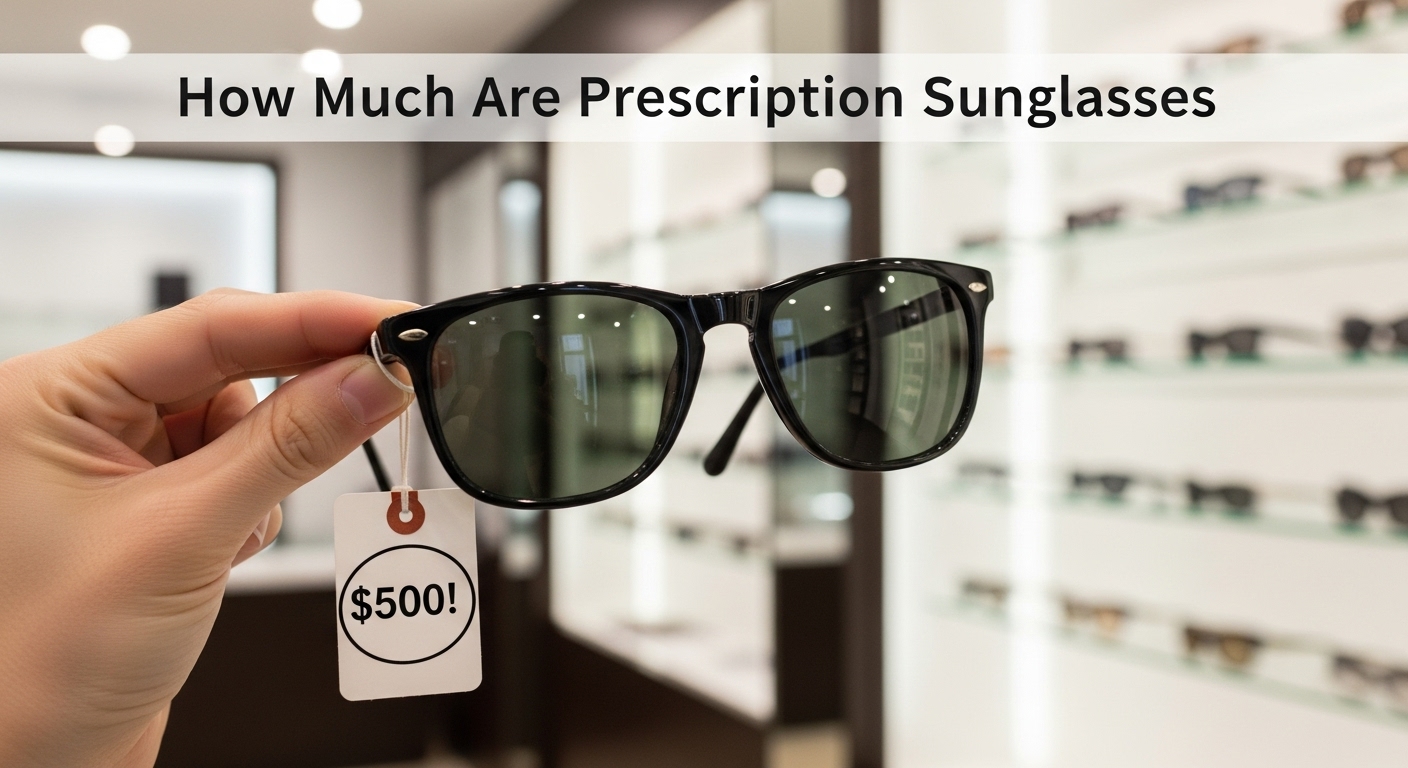



the binoculars over time. Additionally, the offset prism arrangement is more susceptible to misalignment from impacts, though quality models remain quite durable with proper care.
Roof prism binoculars represent the more modern approach to binocular design, featuring straight barrels where the objective lenses align directly with the eyepieces in an “H” shape. This streamlined design, developed in the early 20th century, has become increasingly popular due to its compact form factor and robust construction.
The name “roof prism” comes from the prism’s internal structure, where light follows a path resembling a house roof. Two main roof prism designs dominate the market: the Abbe-Koenig prism (patented by Carl Zeiss in 1905) and the Schmidt-Pechan prism (invented in 1899). Both achieve image correction within a straight-line optical path, allowing for the slim profile that makes roof prisms so portable.
However, this compact design comes with optical challenges. Unlike Porro prisms, roof prisms don’t achieve total internal reflection on all surfaces. Without special coatings, they lose approximately 12-15% of incoming light, resulting in dimmer images. To compensate, manufacturers apply phase correction coatings to prevent light wave interference and dielectric mirror coatings to improve reflectivity. These additional coatings significantly increase production costs, which is why quality roof prism binoculars typically cost more than equivalent Porro models.
The advantages of roof prism binoculars often outweigh their higher cost for many users. Their sealed internal focusing mechanism provides superior weather resistance, making them ideal for harsh outdoor conditions. The straight-barrel design is easier to hold steady, fits better in cases, and generally feels more balanced in hand. These factors have made roof prisms the preferred choice for activities like hunting, birding, and hiking where durability and portability matter.
A less common but interesting variation is the reverse Porro prism design, where the objective lenses sit closer together than the eyepieces. This configuration creates ultra-compact binoculars that maintain some advantages of the Porro design while significantly reducing bulk. However, the narrower objective lens spacing reduces stereoscopic effect, diminishing the enhanced depth perception that makes standard Porro prisms special.
Understanding different types of binoculars extends beyond prism design to specialized features tailored for specific activities. Each use case demands particular characteristics, and manufacturers have developed models optimized for these varied applications.
When selecting binoculars for hunting, several factors become critical for field success. Most experienced hunters prefer 8x or 10x magnification models, as higher powers amplify hand shake and make steady viewing difficult without support. The choice between 8x and 10x often depends on terrain – 8x models excel in dense forests and eastern hunting, while 10x binoculars prove valuable for scanning open western landscapes.
Objective lens size for hunting binoculars typically ranges from 32mm to 50mm, balancing light-gathering ability with portability. The most popular configurations include 8×32, 8×42, 10×42, and 10×50. Larger 50mm objectives gather more light for dawn and dusk observation when game is most active, but add weight that becomes noticeable during all-day carries.
Critical hunting-specific features include:
Some manufacturers offer hunting-specific enhancements like Steiner’s Predator series, which uses special coatings to reduce green foliage brightness while enhancing browns and reds, making game animals more visible against natural backgrounds. In 2025, electronic rangefinding binoculars have also gained popularity, combining observation with precise distance measurement for accurate shot placement.
Marine binoculars face unique challenges from salt spray, constant moisture, and vessel movement. True marine-grade binoculars go beyond basic waterproofing to include features specifically designed for nautical use. Most marine models use 7x magnification rather than higher powers, as boat movement makes steady viewing difficult with stronger magnification.
Essential marine binocular features include:
The classic marine configuration is 7×50, providing a large exit pupil (7.1mm) that remains useful even as eyes age and pupils don’t dilate as widely. This combination also performs well in low light conditions common during dawn or dusk navigation.
Travel binoculars prioritize compact size and light weight without sacrificing too much optical performance. Popular configurations include 8×25, 10×25, and 8×32 models that fold small enough to fit in jacket pockets or small bags. These compact binoculars typically use roof prism designs for their straight-barrel efficiency.
Key considerations for travel binoculars:
Modern travel binoculars in 2025 often feature high-quality optics despite their small size, with ED (Extra-low Dispersion) glass and multi-coatings delivering surprisingly bright, sharp images from compact packages.
Theater binoculars, traditionally called opera glasses, represent a specialized niche requiring specific characteristics. Unlike outdoor binoculars, theater models prioritize wide field of view and aesthetic appeal over high magnification or weather resistance. Most use 3x to 5x magnification – enough to see facial expressions from the balcony without limiting field of view.
Theater binocular features:
Astronomy binoculars occupy a unique position between naked-eye observation and telescope viewing. While they can’t match telescopes for planetary detail, binoculars excel at wide-field views of star clusters, the Milky Way, and bright deep-sky objects. Their dual-eye viewing provides more comfortable extended observation and better perception of faint objects.
For astronomy, bigger is generally better. Popular configurations include:
Key astronomy binocular features:
Specialized astronomy binoculars may include features like 45-degree angled eyepieces for comfortable zenith viewing or individual focus for precise adjustment. Some manufacturers offer models with enhanced coatings optimized for contrast on nebulae and galaxies.
Night vision binoculars represent a specialized category using image intensification or thermal imaging technology rather than traditional optics alone. These devices amplify available light or detect heat signatures to enable observation in near-total darkness.
Night vision generations indicate technological advancement:
Digital night vision has emerged as an affordable alternative in 2025, using sensors similar to digital cameras with infrared illumination. While not matching traditional intensifier tubes in extreme darkness, digital models offer features like image recording and daytime use capability.
Every binocular displays two numbers separated by an “x” (like 8×42 or 10×50) that define its basic characteristics. Understanding these specifications is fundamental to knowing what binoculars do I need for your intended use.
The first number indicates magnification power – how many times closer an object appears compared to naked-eye viewing. An 8x binocular makes objects appear eight times closer, while 10x provides ten times magnification. Higher isn’t always better; increased magnification also amplifies hand movement, narrows field of view, and reduces image brightness.
Magnification guidelines by use:
The second number specifies objective lens diameter in millimeters, determining light-gathering ability and physical size. Larger objectives collect more light for brighter images, especially important in dim conditions, but add weight and bulk.
Common objective sizes:
Exit pupil, calculated by dividing objective diameter by magnification, indicates the diameter of light beam reaching your eye. A 10×50 binocular has a 5mm exit pupil (50÷10=5). Larger exit pupils provide brighter images and are more forgiving of imperfect eye placement.
Human pupils dilate to about 7mm in darkness when young, decreasing to 5-6mm with age. For daylight use, 2.5-3mm exit pupils suffice. For low light, 5mm or larger exit pupils maximize available brightness. This explains why 7×50 marine binoculars and 10×50 hunting models remain popular – they provide useful 7mm and 5mm exit pupils respectively.
Field of view (FOV) indicates how wide an area you can observe, usually specified as feet at 1,000 yards or degrees of arc. Wider fields make finding and tracking subjects easier but generally require optical compromises. Higher magnification inherently narrows field of view.
Typical field of view ranges:
Beyond basic specifications, several optical features create the difference in binocular strengths between budget and premium models. Understanding these elements helps explain price variations and performance differences.
Optical glass quality fundamentally affects image quality. Budget binoculars often use BK-7 borosilicate glass, which works adequately but may show slight edge darkening. Premium models use BaK-4 barium crown glass, providing higher refractive index for brighter, sharper edge-to-edge images.
Extra-low Dispersion (ED) or High Density (HD) glass elements reduce chromatic aberration – the color fringing visible around high-contrast edges. While adding cost, ED glass delivers noticeably cleaner images, especially at higher magnifications.
Every air-to-glass surface in binoculars reflects some light, reducing brightness and contrast. Manufacturers apply thin-film coatings to minimize these reflections:
Premium binoculars may feature specialized coatings like dielectric mirror coatings on roof prisms (increasing reflectivity to 99%) or hydrophobic coatings on external lenses that repel water and ease cleaning.
Eye relief measures the distance your eye can be from the eyepiece while seeing the full field of view. Long eye relief (15mm or more) proves essential for eyeglass wearers, allowing full-field viewing without removing glasses. Even non-eyeglass wearers benefit from generous eye relief during extended observation sessions.
Minimum focus distance indicates how close you can focus while maintaining a merged image. Premium binoculars often focus as close as 5-6 feet, valuable for observing butterflies, flowers, or artwork. Budget models may only focus to 15-20 feet, limiting close-range versatility.
Most binoculars use center focus wheels that adjust both barrels simultaneously, with a diopter adjustment on one eyepiece for individual eye differences. Quality models feature smooth, precise focusing with appropriate resistance – not too stiff, not too loose.
Some specialized binoculars use individual focus (IF) on each eyepiece. While slower to adjust, IF systems offer maximum weatherproofing and hold focus well at set distances, making them popular for marine and astronomy use.
Technology continues advancing binocular capabilities in 2025, with features that would have seemed impossible just decades ago.
Image-stabilized (IS) binoculars use gyroscopes and moving optical elements to counteract hand shake, providing tripod-steady views while handheld. Canon pioneered consumer IS binoculars, with other manufacturers following suit. While adding weight, cost, and battery requirements, IS technology enables comfortable use of 15x or higher magnifications that would otherwise require support.
Laser rangefinding binoculars integrate distance measurement with observation, invaluable for hunters and golfers. Advanced models include ballistic calculators that account for angle, atmospheric conditions, and ammunition characteristics to provide precise aiming solutions. Some connect to smartphones for enhanced data display and environmental inputs.
The latest innovation brings augmented reality to binoculars. Models like Unistellar’s Envision overlay digital information on optical views, identifying celestial objects, landmarks, or wildlife. GPS integration enables location-aware features, while some models offer image capture, streaming, and sharing capabilities.
Selecting from various types of binoculars requires honest assessment of your intended use, physical considerations, and budget. Consider these factors when making your decision:
Define your main application. All-around binoculars that excel at everything don’t exist; every design involves trade-offs. A compact 8×25 perfect for travel disappoints for astronomy, while a 20×80 astronomy binocular proves useless for hiking. Match specifications to your primary use while accepting some compromise for secondary applications.
Consider your physical capabilities and preferences:
Where will you use them? Marine environments demand superior weatherproofing. Extreme temperatures require robust construction and appropriate lubricants. Dusty conditions benefit from sealed optics. Match durability to expected conditions.
Binocular prices range from under $50 to over $3,000. While premium optics deliver superior performance, diminishing returns apply. A $500 binocular often provides 80% of a $2,500 model’s performance. Set a realistic budget, then buy the best quality within that range. Consider used premium binoculars as an alternative to new budget models.
Whenever possible, handle binoculars before purchasing. Ergonomics matter as much as optical specifications. What feels perfect to one person may prove awkward to another. Test focus smoothness, balance, and eye cup comfort. Compare images side-by-side if possible.
Proper care extends binocular life and maintains performance:
As we advance through 2025, binocular technology continues evolving. Manufacturers explore new coating technologies for even higher light transmission. Artificial intelligence integration promises automated subject tracking and identification. Improved stabilization systems may enable handheld use of extreme magnifications. Material advances create lighter yet stronger constructions.
The heart of any binocular lies in its prism system, which corrects the inverted image created by the objective lenses. Understanding binoculars prism types is essential for choosing the right model, as the prism design affects everything from image quality to the binocular’s physical shape and weight distribution.
Porro prism binoculars, invented by Italian optician Ignazio Porro in the 1850s, feature the distinctive offset design where the objective lenses sit wider than the eyepieces. This classic “M” or “broad-shouldered” shape isn’t just nostalgic – it serves important optical purposes that continue to make Porro prisms relevant in 2025.
The offset prism arrangement creates several advantages. First, the wider spacing between objective lenses provides enhanced stereoscopic vision, delivering a more pronounced three-dimensional image with superior depth perception. This makes Porro prisms particularly effective for judging distances and appreciating spatial relationships in landscapes or wildlife observation.
From an optical standpoint, Porro prisms achieve total internal reflection without special coatings, as light rays bend at 90-degree angles through the prism. This natural reflection means that even budget Porro prism binoculars can deliver bright, high-contrast images without the expensive mirror coatings required by roof prisms. The simpler optical path also means less light loss and fewer opportunities for image degradation.
However, Porro prism binoculars do have limitations. Their bulkier design makes them less portable and harder to waterproof completely. The external focusing mechanism, which moves the eyepieces, can allow dust and moisture to enter the binoculars over time. Additionally, the offset prism arrangement is more susceptible to misalignment from impacts, though quality models remain quite durable with proper care.
The diversity of types of binoculars available in 2025 means there’s an ideal model for every user and application. From compact travel companions to powerful astronomical instruments, from specialized hunting optics to robust marine binoculars, each type serves specific needs while sharing the common goal of bringing distant subjects closer.
Understanding binocular types explained through their prism systems, specifications, and specialized features empowers informed decisions. Whether you need the rugged reliability of roof prisms for field use, the enhanced depth perception of Porro prisms for scenic viewing, or the specialized capabilities of rangefinding or night vision models, knowing these differences guides you to the right choice.
Remember that the best binocular is the one you’ll actually use. A compact 8×32 carried daily provides more value than a superior 10×50 left at home. Consider your specific needs, physical preferences, and intended applications. With this knowledge of how to choose a binocular and clarity about what binoculars do I need, you’re prepared to select optics that will enhance your viewing experiences for years to come.
However, the fundamental appeal of binoculars – immediate, natural magnified viewing with both eyes – remains unchanged. Whether you choose classic Porro prisms for their depth perception, modern roof prisms for portability, or specialized models for specific pursuits, understanding these various types of binoculars ensures you select the perfect optical companion for your adventures.
The difference in binocular strengths extends beyond mere specifications to encompass build quality, optical coatings, and specialized features. By understanding these variations and matching them to your requirements, you’ll find binoculars that transform distant subjects into memorable close encounters, whether you’re identifying binoculars for hunting success or exploring the cosmos through astronomical binoculars. The perfect pair awaits – you now have the knowledge to find it.
Selecting the right types of binoculars can transform your viewing experience, whether you’re tracking wildlife, stargazing, or enjoying sporting events. In 2025, the variety of binocular designs and specialized features has expanded significantly, making it crucial to understand the differences between various types before making your investment. From compact travel models to powerful astronomy binoculars, each type serves specific purposes and offers unique advantages.
This comprehensive guide will help you navigate through different binocular types explained in detail, covering everything from prism designs to specialized uses. We’ll explore how to choose a binocular that matches your specific needs, understand what binoculars do I need for various activities, and clarify the difference in binocular strengths to help you make an informed decision.







